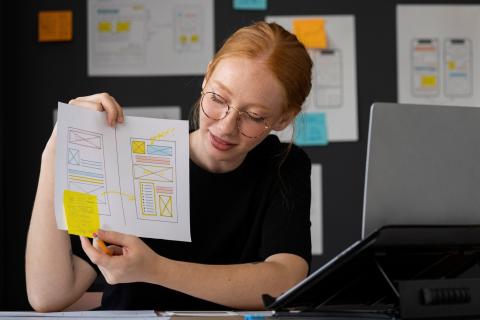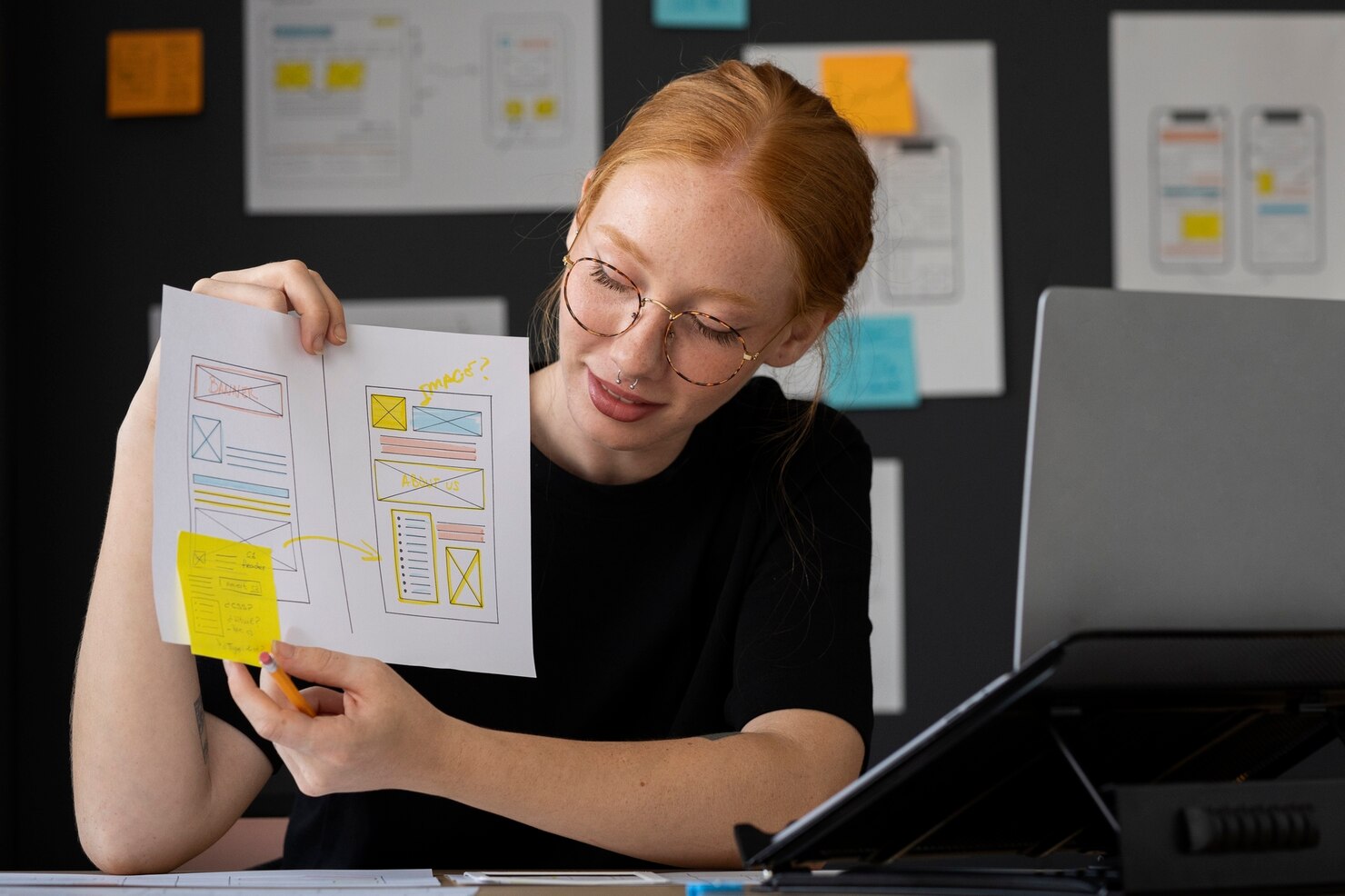
The product discovery process is essential in developing successful products, as it allows you to validate ideas and ensure that final products meet market expectations. Prototype testing at this stage is key to gathering real user feedback and fine-tuning concepts before implementation.
Read on in this article to learn about the most effective methods for testing prototypes and how they can streamline the product discovery process.

Why is it important to test prototypes in Product Discovery?
Before delving into the methods, it is important to understand the role of prototype testing. This testing allows you to:
Validate early ideas: identify whether a solution really solves the problem at hand.
Save time and costs: avoid development errors that are discovered late in the process.
Improve user experience (UX): fine-tune the user's interaction with the product.
Common Methods for Testing Prototypes with Product Discovery
1. Usability Testing
Usability testing is one of the most common methods in product discovery, as it provides direct feedback on how users interact with the prototype. In this methodology, a target group of users is invited to complete specific tasks within the prototype while observers record issues, confusions, and the time taken to complete the tasks.
Benefits of Usability Testing
- Identification of usability barriers: navigation, layout, and interaction flow issues are detected.
- Real-time feedback: users can share comments while interacting with the prototype.
- Functionality evaluation: testing whether the proposed features are understandable and useful to the user.
Recommendations for usability testing
- Design specific and simple tasks that reflect the expected use.
- Conduct in-person or virtual sessions and record them for later analysis.
- Have a moderator to guide and assist users without interfering in their experience.
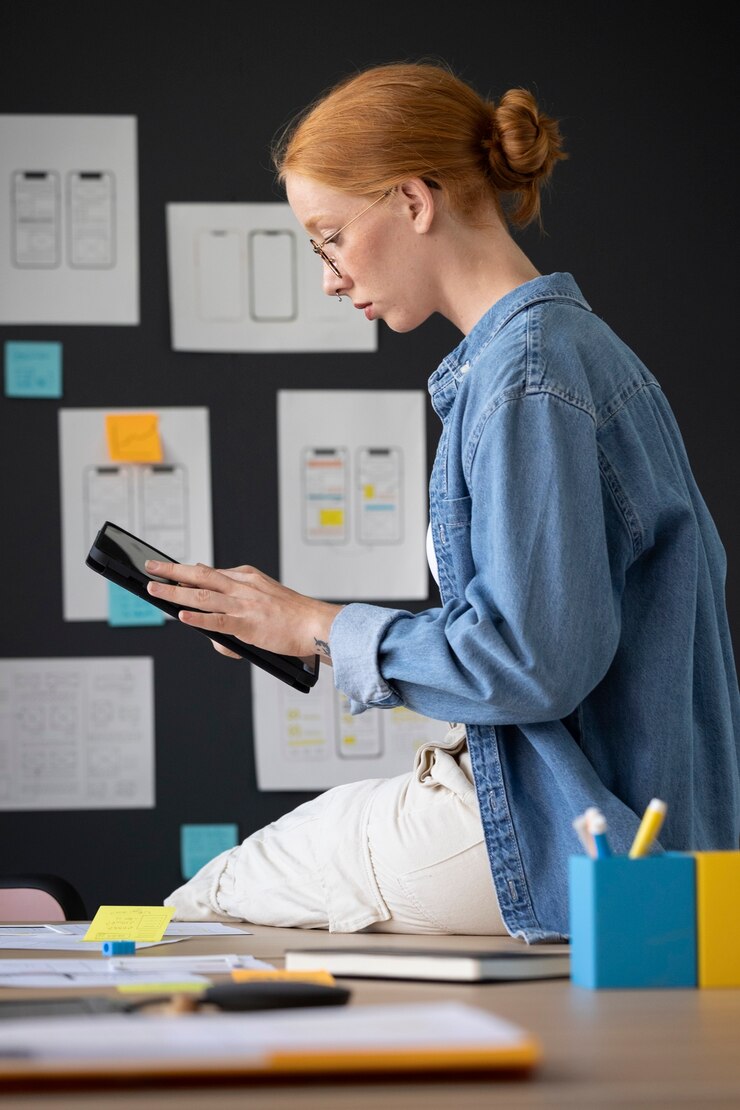
2. A/B Testing
A/B testing consists of showing two different versions of the same prototype to different groups of users to compare their effectiveness. This method is especially used to test specific aspects, such as the design of an interface or the navigation flow.
Benefits of A/B Testing
- Precise quantitative data: allows for obtaining clear metrics on the effectiveness of each version.
- Evidence-based decision making: facilitates the selection of the most effective option based on measurable results.
- Continuous optimization: helps refine details that can significantly improve the user experience.
Recommendations for A/B Testing
- Limit the differences between versions to isolate the test variable.
- Choose a representative and balanced group of users.
- Measure relevant factors such as interaction time and success rates.
3. Concept testing
Concept testing allows you to verify whether the idea behind the prototype is viable and whether it meets the client's expectations. This method focuses on validating the idea itself, without dwelling on technical or design details.
Benefits of concept testing
- Early validation of the idea: it confirms whether the product concept has the potential to succeed.
- Focused feedback: feedback on the value of the product is received before its full development.
- Risk reduction: investment in ideas that may fail is avoided.
Recommendations for concept testing
- Create simplified prototypes that focus on the main functionality.
- Involve potential users and key stakeholders to evaluate perceived value.
- Analyze and document feedback to adjust the concept before moving forward.
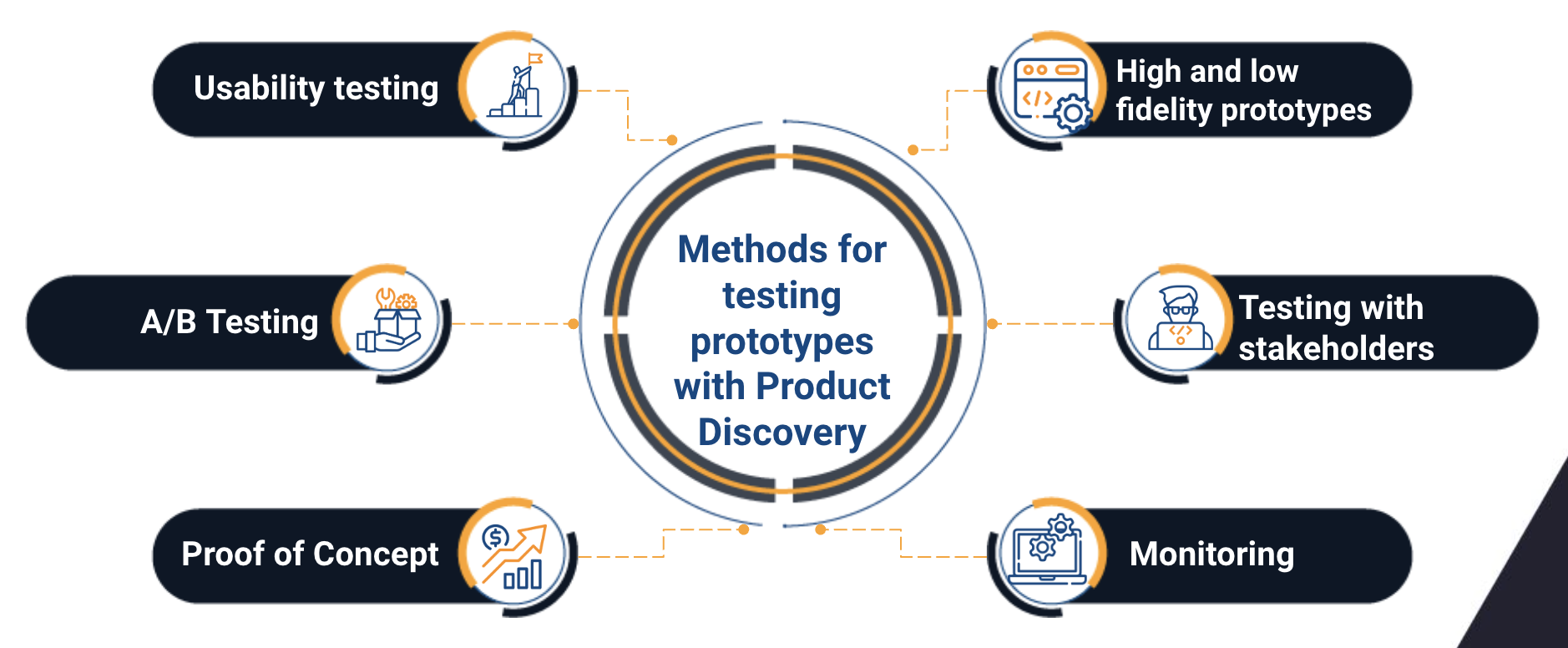
4. High- and low-fidelity prototypes
Depending on the goals of your product discovery, you can test with low- or high-fidelity prototypes. Low-fidelity prototypes are simple representations, such as sketches or wireframes, while high-fidelity prototypes are more closely aligned with the final product.
Benefits of low- and high-fidelity prototypes
- Flexibility in the early stages: Low-fidelity prototypes are quick and easy to modify.
- Detailed visualization: High-fidelity prototypes allow you to evaluate aesthetics and visual experience.
- Specific and relevant feedback: Each type of prototype allows you to focus testing on different aspects of the product.
Recommendations for using low- and high-fidelity prototypes
- Use low-fidelity prototypes in the early stages to validate general concepts.
- Test high-fidelity prototypes with end users to get feedback on the interface and flow.
- Scale from low to high fidelity as you gather information and validate the concept.
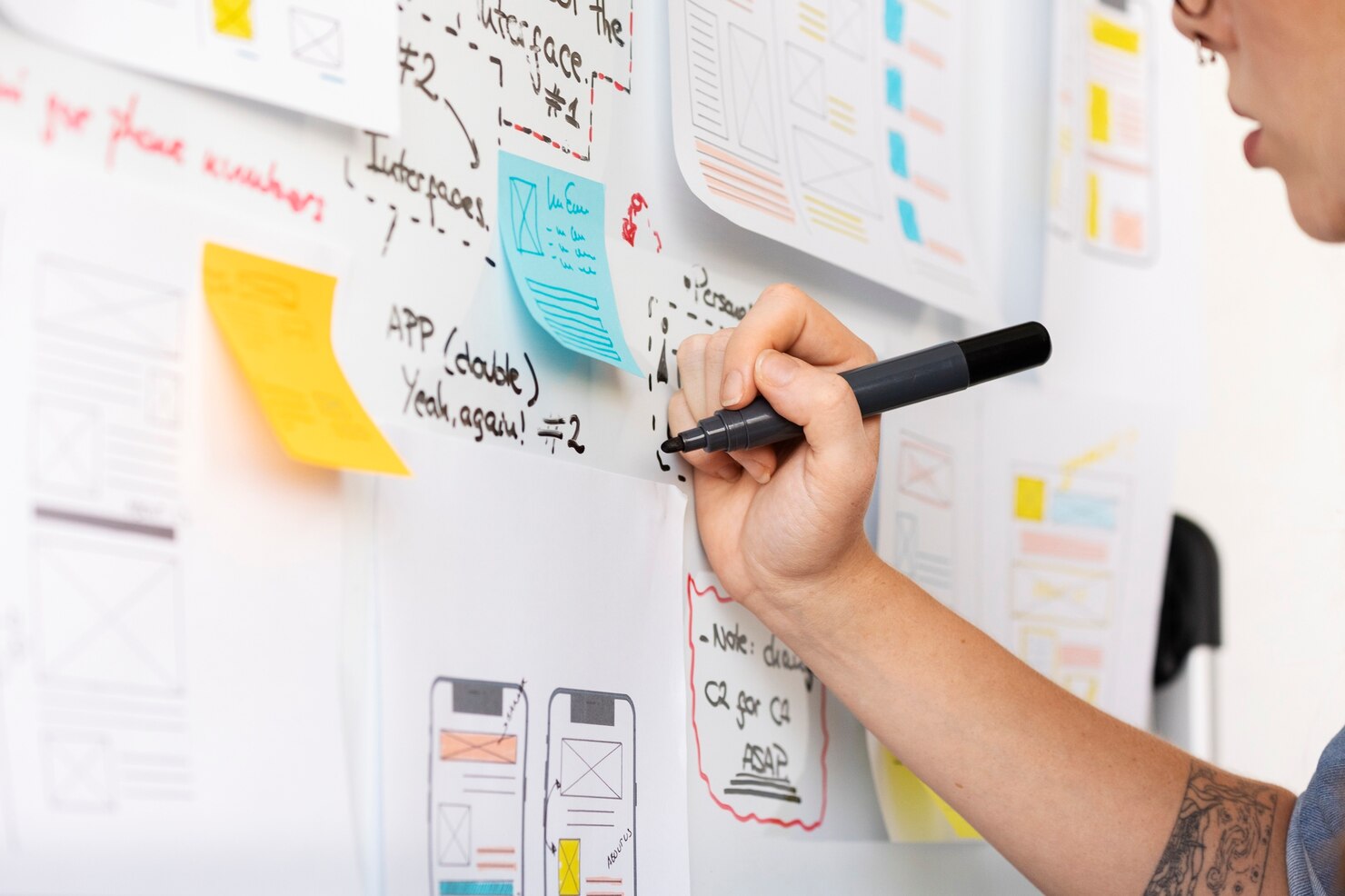
5. Stakeholder testing
Stakeholder testing is crucial in product discovery, as it allows you to gain valuable insights from internal and external stakeholders, including customers, product leaders, and development team members. This testing ensures that the prototype is aligned with business and technical goals.
Benefits of stakeholder testing
- Goal alignment: ensures that the prototype meets business and technical goals.
- Stakeholder engagement: increases stakeholder commitment to product development.
- Early risk identification: stakeholders can point out potential risks that went unnoticed.
Recommendations for stakeholder testing
- Organize prototype presentations to receive comments and suggestions.
- Collect feedback from all stakeholders and analyze its impact on development.
- Encourage collaborative discussions to address improvements and adjust the prototype.
Testing prototypes in product discovery is essential to validate ideas and ensure the success of the final product. Each method mentioned – from usability testing to stakeholder testing – provides unique insights that help optimize the product at every stage of its development.
By employing a combination of these methods, teams can identify problems early, reduce costs, and improve the user experience, maximizing the chances of success in the market.
